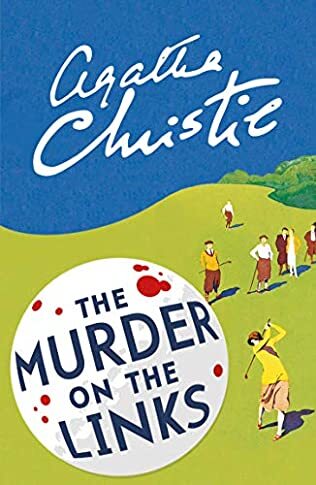The Murder On The Links

A review of The Murder on the Links by Agatha Christie – 230504
It is hard to believe that this book, the second in Agatha Christie’s Hercule Poirot series, was published a hundred years ago (1923). Narrated by Captain Hastings, Poirot’s faithful Watson, it is the book in which the none too bright but loyal friend meets his future wife, a romantic dalliance that will cause him to break his alliance with the Belgian sleuth and move to Argentina. Although Hastings narrates most of the Poirot short stories, he only appears in eight of the full-length novels.
The book has been reviewed so many times and has been adapted for radio and television that there seems little point in going through the plot in any detail, but rather I will pick out the main features that struck me about a book that is both enjoyable and entertaining, ideal holiday reading fare, and yet for its time one that does not overly offend modern readers who are sensitive to views and opinions that were commonly held at the time Christie wrote but are less so these days.
In essence, the resolution of the crime – the murder of Monsieur Renaud who is found in a shallow grave on the links of a golf course with a knife in his back, an eventually of which he had a premonition, summoning Poirot for help, only too late – is a clash between two policing methods. The officer formally in charge of the investigation is Giraud, the darling of the Parisian Sûreté, who sets about his task with Holmesian thoroughness, employing modern scientific methods to crack this ticklish problem. His earnest approach wins the admiration of Hastings who thinks that his friend, Poirot, is taking too much of a laissez-faire approach.
Poirot and Giraud have previous, and the Belgian is determined to show the superiority of his methods, allowing a combination of quietude and supercharged little grey cells to do his leg work. Whereas Giraud eavesdrops behind bushes, Poirot simply observes and listens to what people tell him, allowing time for the inconsistencies to surface and lead him to the truth. Of course, Poirot’s method prevails, and he sinks his put to take the game.
The book seemed fairly clued to me, there was enough for the reader, if so inclined, to pit their wits against Poirot, but there was a little too much coincidence for my liking. It was only through re-reading some of her books that I have come to realise why I was not her greatest fan. The dialogue is often quite unbelievable, and the characterisation is woefully thin. Even her main man, Poirot, seems to have changed from the first outing in The Strange Affair at Styles, and Hawkins is the archetypal male chauvinist. There are much better crime writers than her.
Despite the title, there is not much golf in the book, the links being just a different place to locate a body. After all, libraries get terribly crowded.
An unchallenging whodunit, neither too dreadful nor first rate, one for the beach with a drink as an accompaniment.



